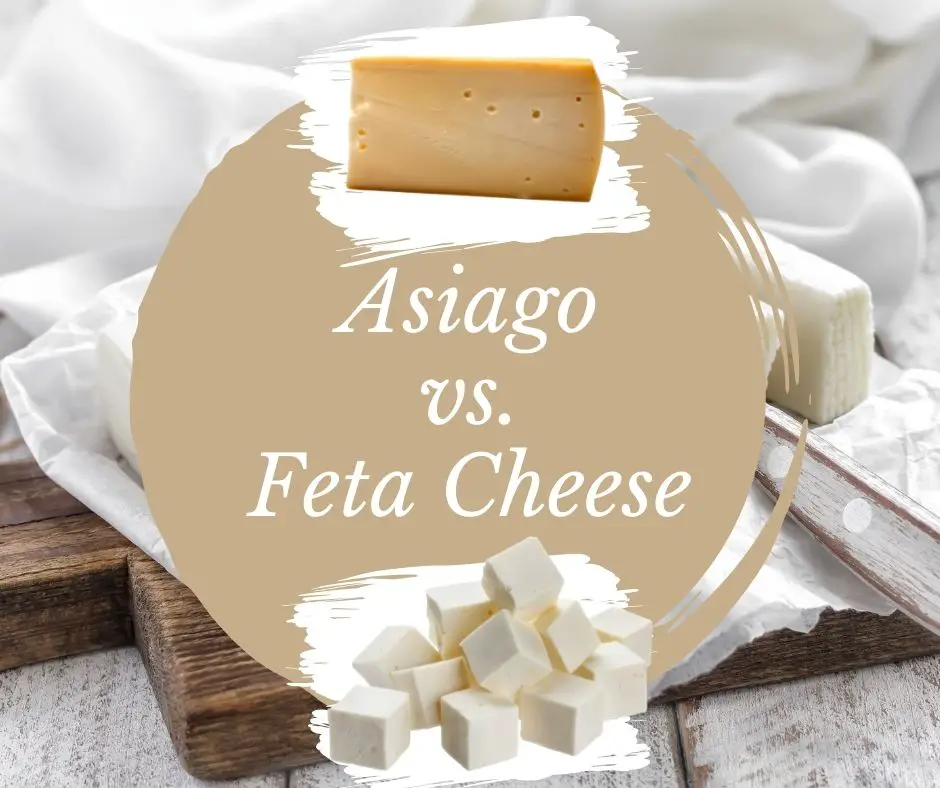Last Updated on November 5, 2022 by Aaron
Asiago and Feta are two types of highly appreciated cheese. They have some similarities, but there are also some significant differences between the two.
Here are the main points of each cheese:
- Feta is a semi-soft Greek cheese that has gained popularity in other countries around the world, while Asiago is a hard type of Italian alpine cheese.
- Asiago and Feta both have a tangy, salty flavor with a crumbly-grainy texture.
- Feta cheese is usually made from a mixture of goat and sheep milk. Other varieties may use cow’s milk. Feta has a flavor that tends to be slightly acidic and salty.
- Asiago is made from cow milk and it has a creamy, nutty, and slightly sweet flavor.
The Greek Feta cheese is brined-aged in a wooden barrel for 2-12 months, while Asiago is first brined and later dry-aged for a similar period. The flavors of Asiago and Feta become sharper with age.
Asiago is usually pale yellow or straw-colored, while Feta ranges from white to beige.
Table of Contents
Are they healthy?
Both Asiago and Feta are healthy. They are both made from milk and are nutrient-rich.
Asiago and Feta are both providing protein, calcium, vitamin B12, B6, phosphorus, and more. I explained more in Asiago’s good or bad article.
However, Feta also contains a fair amount of histamine, especially for those of you who find yourself allergic to feta here could be the reason.
Production
Asiago and feta are produced quite differently. Asiago is more of swiss-style cheese making and similar to Gruyere. While Feta is a white-brined cheese that allows more activities with salt-resistant yeast, which may also be present in brine (1).
For that reason, feta resulted in high acidity and high moisture – it does not melt well. Asiago, on the other hand, melts fairly well, read asiago meltability.
The Serve and Use
Asiago and Feta are both served in a variety of ways. They can be used as a table cheese, added to salads, or melted into dishes.
Feta is often used in Mediterranean cuisine, while Asiago is popular in Italian dishes. Feta is often crumbled and used as a topping, while Asiago can be shaved or grated.
Asiago is usually not a good substitute for feta. Asiago is more relatable to parmesan and pecorino, whereas feta is closer to cottage cheese with a similar texture. Alternatively, you can even try the dairy-free feta substitutes.
The price
Feta is widely available and produced in many countries. Whether it’s barrel-aged or Greek feta or French feta or domestic (US) feta, you will usually find Feta 30-50% cheaper than Asiago.
Reference:

